
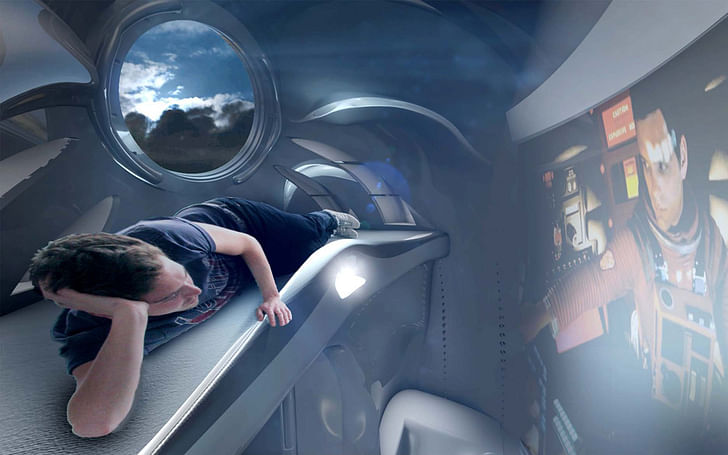
Taking a minimalist approach to both design and production, students in UCLA’s 3M futureLAB studio condensed micro-housing to an even smaller scale, with their 3D-printed, one-person, transportable housing unit. Conceived for the ideals of a fiercely mobile young professional, the full-scale model measures a lilliputian 4.84sq meters, and manages to include a multi-media interface in addition to a bathroom, kitchen and bedroom.
The studio included both UCLA and University of Huddersfield students, and was led by UCLA's visiting professor Peter Ebner, with consultation from Voxeljet, a European industry leader in 3D-manufacturing systems. The 3D printable components extend far beyond the shell of the dwelling, and include the mattress, thermal insulation, and systems for heating, water, electricity, and sewage. Without a centralized “hearth” space, the multimedia system becomes the focal point of the tiny space, most accessible from the lofted sleep-area. The unit can be relocated by crane, attached to a simple cross-bar attachment (in case that young professional gets transferred).
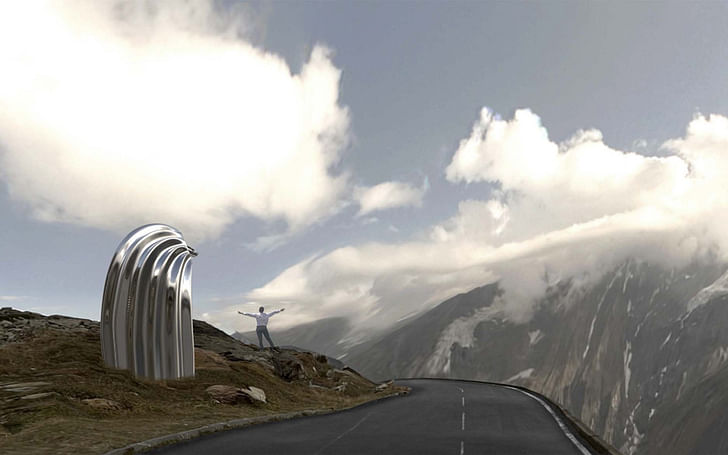

The following project description comes courtesy of Peter Ebner and 3M futureLAB, and was written by Elizaveta Klepanova:
Once upon the time 3D-printing technology emerged and thats how the "fairy-tale“ started. This technology was investigated and developed in the 80s and was based on the stereolithography method. 3D machine let to print complicated shapes based on CAD drawings . Immediately it find its response in many different spheres such as medicine, car design, jewelry production. Although there was one evident minus - CAD programs in the beginning were not so well-known and not many people were able to use them. 3M company - an American multi-international conglomerate corporation working in the innovative technology field were one of the pioneers who believed in future of this technology and its importance starting to invest in its development.
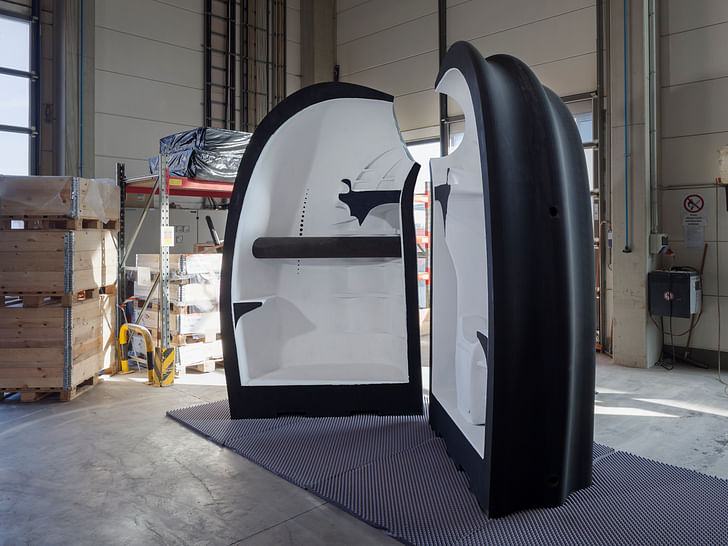

Times when CAD programs were barriers for 3D printing passed long time ago but 3D printing itself incredibly developed. Nowadays you can print any kind of artificial limbs, car inner structure with maximum detail preciseness, or for example change every day shoes, just printing them according to your taste. Lifestyle can be printed. Let's even go further and think about bigger formats. Printed house?
“Why not?“ – was the response to this question by professor, architect and futurist Peter Ebner. He with his students from 3M futureLAB by UCLA (University of California Los Angeles) + HUD (University of Huddersfield) made a printed house. What was the “success recipe“?

Easy. First, interdisciplinary student team working together. People with diverse professional background vision (coming from architecture, mechanical engineering , robotic, aerospace engineering, business) designing and developing project from different sides. Second: place to make "dreams real“. This place was 3D printing factory in Bavaria called Voxeljet who were open for collaboration and printing of this size and detailing . Third: financing from people who believed in this idea success – 3M company and Voxeljet . And, finally, Prof. Peter Ebner who made all “recipe components“ to work.

Result?
Is visible. It is an experimental apartment which easily can be transported and integrated in any kind of ambient. It has everything necessary inside: bathroom, kitchen, bed, table in aesthetically beautiful and smart designed way. Apart of this minimum of functions it offers also an inside multimedia system: rear projection screen occupies the biggest part of the wall and creates a kind of semantic center of the apartment. From the mezzanine level of bed (inside which the projector is hidden) the screen is best visible. Because of the space economy to reach the bed one need to use folding ladder.
Material from which the apartment was printed is plastic based on sand and special glue. Undulating apartment shape allows to integrate easily most of the furniture. The space under the floor is also used- apart of having technical areas it has storage.
Apartment size is 2.2 m x 2.2 m: quite tiny. So it was evident that there should be enough light for both comfort and visual reasons. The main source of fresh air and light is window: the “Oculus“ over the bed. Also there are a lot of artificial light sources: shell built-in wall and ceiling lamps, a lamp in the kitchen and bathroom, reading lamp by the bed. All of them are LED.
In order to save maximum space, a special movable kitchen countertop with sink covers the bath. So if necessary out of this surface a kitchen table can be taken. It has the size of 56cm x 60 cm -- enough for one person. A small fridge is also available. Bathroom has a special folding toilet which can be hidden inside the wall if necessary. In addition to the bath, which is a “luxury element“ sometimes not available even in big apartments but made in experimental one there are sink and shower.
Returning to the 3D printing topic is necessary to underline that apartment was printed on a highly detailed level. So for example you can see mattress springs, heating, water, electricity sewage systems, thermal insulation. Heater and water treatment devices still can’t be printed out but they have been thoughtfully integrated into the apartment design.
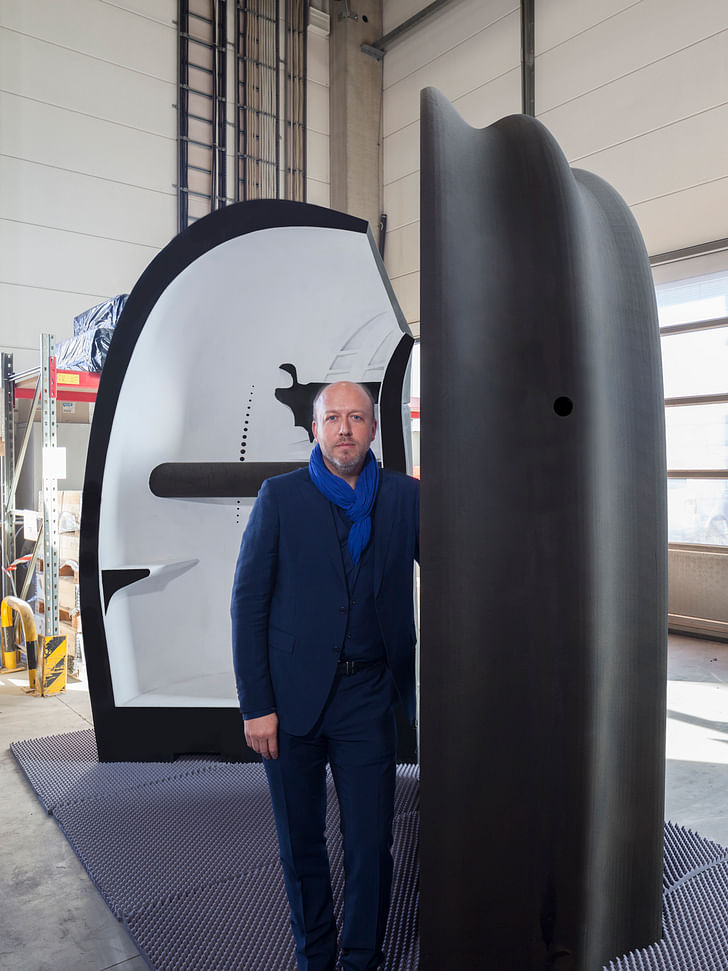
It is necessary to repeat that students from different disciplines worked on the project. For example engineers made special tests: thermal, vacuum, heating. Result- U- value achieved equals 0.01 W/m2 K instead of the A Class Standard Efficiency level of 1 W/m2 K.
The apartmentʼs shape has its “shell-form“ also not by case. It is coming from structural forces and not just only by studying organic shapes like Sea shells. External shape is a result of a combined bio-mimetic morphology of two organic systems. Cacti system embeds the system within the wall and the structural shell resists both lateral load and optimized the small space. Smooth surface of the apartment allows rainwater to flow to the ground level there there are drains leading off to the tank. Being filtrated water flows into the toilet tank. Ideally it could be used for washing but still the filtrating system is too big to fit the apartment size. Flow water heater meanwhile is integrated in the partition between the kitchen and bathroom and the capillary tubes located in the walls and ceiling are responsible for the space heating.

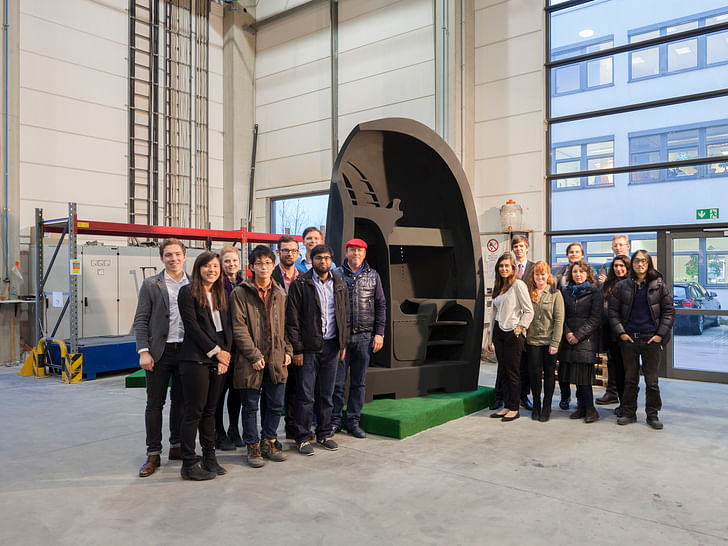
As mentioned above, apartment is supposed to be easily transported and integrated elsewhere -- so in the structure of it there is a special cavity for metal rod by which it is possible to pick it up with the crane.
The 3D printing story is to be continued. What will be the next step? To print the whole city? Maybe. But seems that future had never been as close as it is now.
Peter Ebner is already working on the next phase of printing with Voxeljet and Fraunhofer Research Institute to shape the future.

Former Managing Editor and Podcast Co-Producer for Archinect. I write, go to the movies, walk around and listen to the radio. My interests revolve around cognitive urban theory, psycholinguistics and food.Currently freelancing. Be in touch through longhyphen@gmail.com
8 Comments
Looks like an alien house, however cool idea but I dont think anyone would live in that
you mean a spaceship haha
The project makes me feel lonely and depressed.
You must be MAD.... wait...

Wait .... Somebody call the FLY hes missing his home.
hmmm.... one person transportable housing unit, with kitchen, and toilet:
and I hear they make portable showers too. all of this can fit on your back, horse, or bicycle.
except - it does have a pretty lousy R-value...
seriously, though... There are so many problems with this I cannot even begin - if any part of the system fails, the whole unit is essentially useless - if you're going for the "mobility" angle, you really don't want to be shackled by some giant pod you're going to have to find space for...
it's a solution in search of a problem.
also - this project reminds me of this:
^lol. You nailed it.
Block this user
Are you sure you want to block this user and hide all related comments throughout the site?
Archinect
This is your first comment on Archinect. Your comment will be visible once approved.